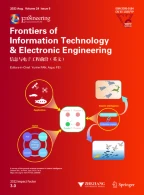Abstract
The modeling of switching loss in semiconductor power devices is important in practice for the prediction and evaluation of thermal safety and system reliability. Both simulation-based behavioral models and data processing-based empirical models are difficult and have limited applications. Although the artificial neural network (ANN) algorithm has often been used for modeling, it has never been used for modeling insulated gate bipolar transistor (IGBT) transient loss. In this paper, we attempt to use the ANN method for this purpose, using a customized switching loss test bench. We compare its performance with two conventional curve-fitting models and verify the results by experiment. Our model is generally superior in calculation speed, accuracy, and data requirement, and is also able to be extended to loss modeling for all kinds of semiconductor power devices.
Similar content being viewed by others
References
Bazzi, A.M., Kimball, J.W., Kepley, K., Krein, P.T., 2009. TILAS: a Simple Analysis Tool for Estimating Power Losses in an IGBT-Diode Pair under Hysteresis Control in Three-Phase Inverters. 24th Annual Applied Power Electronics Conf. and Exposition, p.637–641. [doi:10.1109/APEC.2009.4802726]
Blaabjerg, F., Pedersen, J.K., Sigurjónsson, S., Elkjær, A., 1996. An Extended Model of Power Losses in Hard-Switched IGBT-Inverters. Proc. IEEE Industry Applications Conf., p.1454–1463. [doi:10.1109/IAS.1996.559258]
Bryant, A.T., Lu, L., Santi, E., Hudgins, J.L., Palmer, P.R., 2008. Modeling of IGBT Resistive and Inductive Turn-on Behavior. IEEE Trans. Ind. Appl., 44(3):904–914. [doi:10.1109/TIA.2008.921384]
Cavalcanti, M.C., da Silva, E.R., Jacobina, C.B., Boroyevich, D., Dong, W., 2003. Comparative Evaluation of Losses in Soft and Hard-Switched Inverters. 38th Industry Applications Conf. Annual Meeting, 3:1912–1917.
Hefner, A.R.Jr., 1994. A dynamic electro-thermal model for the IGBT. IEEE Trans. Ind. Appl., 30(2):394–405. [doi:10.1109/28.287517]
Hefner, A.R.Jr., Diebolt, D.M., 1994. An experimentally verified IGBT model implemented in the Saber circuit simulator. IEEE Trans. Power Electron., 9(5):532–542. [doi:10.1109/63.321038]
Hu, W., Wen, X., Wen, H., Liu, J., 2008. Research on Loss Model and Junction Temperature of IGBT for Electric Vehicles Using PSPICE. Int. Conf. on Electrical Machines and Systems, p.4123–4126.
Kraus, R., Türkes, P., Sigg, J., 1998. Physics-Based Models of Power Semiconductor Devices for the Circuit Simulator SPICE. Power Electronic Specialists’ Conf., 2:1726–1731. [doi:10.1109/PESC.1998.703414]
Michel, L., Cheriti, A., Sicard, P., 2009. Development of an Efficient IGBT Simulation Model. Canadian Conf. on Electrical and Computer Engineering, p.252–256. [doi:10.1109/CCECE.2009.5090131]
Poulsen, B., Sørensen, M.B., 2004. Modelling and Test of Power Semiconductors. Master Thesis, Aalborg University, Denmark.
Rosu, M., Wu, X., Cendes, Z., Aurich, J., Hornkamp, M., 2008. A Novel Electrothermal IGBT Modeling Approach for Circuit Simulation Design. IEEE 23rd Annual Applied Power Electronics Conf. and Exposition, p.1685–1689. [doi:10.1109/APEC.2008.4522953]
Shen, Y., Xiong, Y., Jiang, J., Deng, Y., He, X., Zeng, Z., 2006a. Parasitic Inductance Effects on the Switching Loss Measurement of Power Semiconductor Devices. IEEE Int. Symp. on Industrial Electronics, 2:847–852. [doi:10.1109/ISIE.2006.295745]
Shen, Y., Xiong, Y., Jiang, J., Deng, Y., He, X., Zeng, Z., 2006b. Switching Loss Analysis and Modeling of Power Semiconductor Devices Based on an Automatic Measurement System. IEEE Int. Symp. on Industrial Electronics, 2:853–858. [doi:10.1109/ISIE.2006.295746]
Sheng, K., Finney, S.J., Williams, B.W., 1999. A new analytical IGBT model with improved electrical characteristics. IEEE Trans. Power Electron., 14(1):98–107. [doi:10.1109/63.737597]
Sheng, K., Williams, B.W., Finney, S.J., 2000. A review of IGBT models. IEEE Trans. Power Electron., 15(6):1250–1266. [doi:10.1109/63.892840]
Xu, D.W., Lu, H.W., Huang, L.P., Azuma, S., Kimata, M., Uchida, R., 2002. Power loss and junction temperature analysis of power semiconductor devices. IEEE Trans. Ind. Appl., 38(5):1426–1431. [doi:10.1109/TIA.2002.802995]
Author information
Authors and Affiliations
Corresponding author
Additional information
Project supported by the Power Electronics Science and Education Development Program of Delta Environmental & Educational Foundation (No. DREO2006022) and the National Natural Science Foundation of China (No. 50737002)
Rights and permissions
About this article
Cite this article
Deng, Y., He, Xn., Zhao, J. et al. Application of artificial neural network for switching loss modeling in power IGBTs. J. Zhejiang Univ. - Sci. C 11, 435–443 (2010). https://doi.org/10.1631/jzus.C0910442
Received:
Accepted:
Published:
Issue Date:
DOI: https://doi.org/10.1631/jzus.C0910442
